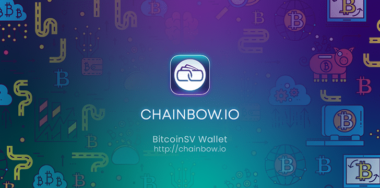October 31, 2008 was the day of the public announcement that the era of exclusive bank and state minting and distribution of cash was coming to an end as a revolutionary new economic system was about to launch across a P2P network built from the ground up. Satoshi Nakamoto debuted the Bitcoin white paper to the Cryptography Mailing List via metzdowd.com saying “I’ve been working on a new electronic cash system.” While the first block would not be mined for about two months, these were the words that spoke Bitcoin into existence. And almost immediately, small blockers came to rain on the parade.
– @realCoinGeek is proudly celebrating the 12th anniversary of the Bitcoin Whitepaper Day!#Anniversary #BitcoinSV #BSV #WhitepaperDay #Satoshi pic.twitter.com/1KpxRpmz5H
— CoinGeek (@RealCoinGeek) October 31, 2020
James Donald responded to Satoshi, “We very, very much need such a system, but the way I understand your proposal, it does not seem to scale to the required size…” and went on to tell Satoshi that in order for Bitcoin to work, everyone would need to run their own full node. Satoshi rejected this criticism, but on day one there was a small blocker critic of the Bitcoin protocol, and we are still debating these fools today.
But that is a segue that can be covered elsewhere.
The Day of Reformation
October 31st is a historically significant day representing the purification of old world traditions so that they can be reinvigorated to serve newer and higher purposes. In the Western hemisphere, most folks do not know the history of “Halloween” very deeply, and mostly just celebrate with friends in macabre themed costumes and decor. References to the ancient Gaelic autumnal celebration “Samhain” are common, but October 31st represents so much to the history of crucial cultural revolutions.
In the 8th century, Pope Gregory III instituted November 1st as “All Saints Day,” as a celebration of the saints of the church, their martyrdom and the solemnity with which such remembrances should be revered. That celebration was a festival – replacing ancient pagan gods with Christian symbolism as a cultural graft atop the foundations of the old world, and an age of Christian enlightenment was meant to sweep the world. To the credit of the Roman Church, the mathematical, scientific and philosophical research of the Catholics leapt off from Rome and spread across Europe like wildfire. The network of churches and the written Latin language worked as a sort of encrypted language for the rapid dissemination of data across medieval Europe.
On October 31st, All Saints’ Eve was a pre-holiday celebration in much of Europe and the British Isles where the end of death’s grip on the people of the church could be celebrated with some levity. Combined with the older, pagan rituals, something resembling a modern understanding of Halloween grew up out of these cultures, and October 31st became a day of great celebration for the whole church. As they saw things, death could be laughed at as life had come to Europe through the work of the Church, and it was celebrated with vigor.

In the early 16th Century, a schism had begun to form in the Catholic Church over the frustration that the commoner could not read Latin and required a hierarchy to read them the Bible, the news and the law. Under the assumption of rampant corruption, in 1517, a revolution was kickstarted by separatists as a new global data tool emerged out of Germany. Parishioners rose up to demand that the Bible be distributed widely in languages which could be read by the people, and the Gutenberg Press cut the cost of data reproduction down by a huge margin.
With knowledge and liberation on the rise, on October 31st 1517, a letter was written to the church announcing that the era of centralized printing and distribution of Biblical truths was coming to an end. As Martin Luther, a German monk, hammered his white paper (commonly called “The Ninety-Five Theses”) to the door of the church at Wittenburg, he started the beginnings of a revolution in the distribution and understanding of data that precipitated the end of Catholic church hegemony. His theses paved the way for the modern understanding of science, human rights, law and the creation of the Protestant church all of which led to the spread of Renaissance thought across Europe and ultimately to the new world.
Significance
Great leaps from pagan to Christian, from Catholic to Protestant, from ignorant to educated, and from confused to enlightened, were kicked off on October 31st. In 2008, another great leap was taken, and it would be foolish to believe that the polymath, Satoshi Nakamoto, did not choose a day of great shift to move the world from monetary exclusionism to a new era of sound money and data integrity. Nothing about the bitcoin protocol was flippantly chosen, so perhaps there is an undisclosed significance to the date as well.
And so, on that hallowed eve in 2008, the world could read the opening thoughts of Bitcoin. The debates would begin almost instantly, but Satoshi made it very clear that bitcoin would solve the problems of centralized payments systems, lamenting, “…the cost of mediation increases transaction costs, limiting the minimum practical transaction size and cutting off the possibility for small casual transactions.” He knew the world needed micropayments to solve the problems of “Commerce on the Internet” which was the subject of the introduction to his Bitcoin white paper. The world had credit cards, swift and even tools like PayPal, but there was not yet a system to send a single dollar or a single penny across the world to pay for something too inexpensive for the siloed economies of the Internet era.
Proposing Bitcoin to the world, he illustrated “a peer-to-peer distributed timestamp server to generate computational proof of the chronological order of transactions.” He began processing transactions for the world in January 2009 – the first of which contained extra OP_RETURN data stating “Chancellor on the brink of second bailout for banks” as a way to show that bitcoin could be time-stamped with a hash, but also tied back to extra data transmitted on chain.
From that day forward, discussions of money, data transmission and peer-to-peer communication protocols would need to, at the very least, deal with Bitcoin.
Thank you, Satoshi, and Happy Halloween!
New to blockchain? Check out CoinGeek’s Blockchain for Beginners section, the ultimate resource guide to learn more about blockchain technology.









